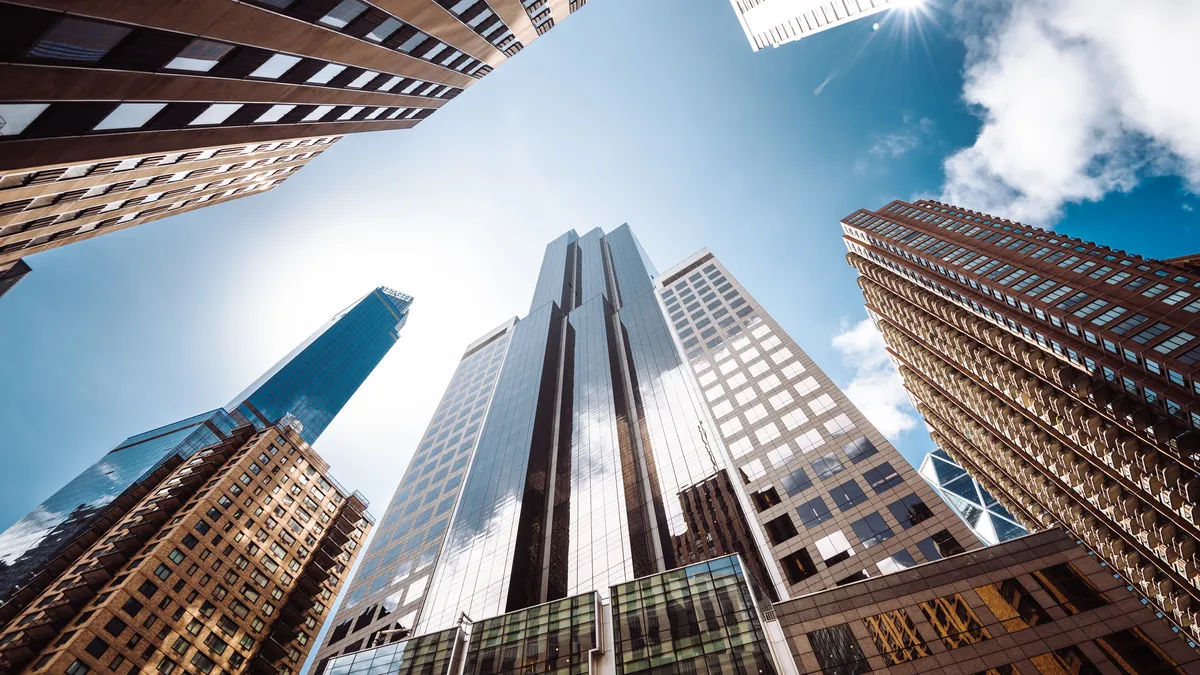Dive Brief:
- Conversions of office buildings to apartments — an ostensible solution both to housing undersupply and vacant office space — have proven difficult and costly for developers, according to an observation in Yardi Matrix’s July 2022 National Office Report.
- The most prominent logistical challenge in apartment conversions is the large floor plates in office space, which limit natural light exposure in individual units and reduce the number of units available on a given floor. Utility requirements and ceiling heights add additional costs to redevelopment, the report said.
- Many of the most successful conversions have been high-end projects in major East Coast markets. Yardi expects the conversion trend to continue as a luxury niche rather than a true workforce housing solution, unless office building costs depreciate significantly or local governments offer incentives to developers.
Dive Insight:
In the two years-plus since the start of the COVID-19 pandemic, a spike in hybrid and remote work has contributed to a drop in demand for office space.
The commercial office vacancy rate stands at 15.2%, up 20 basis points from 12 months ago, according to Yardi. Almost all of the top 30 major markets tracked by Yardi are seeing office vacancy rates in the double digits, with the exception of Boston at 9.6%. Yardi attributes Boston’s performance to its status as a life sciences hub with a need for in-person lab space.
Adaptive reuse has been on a steady upward trajectory since the 2010s, but new conversion projects exploded after the start of the pandemic. Office conversions are the most common type of adaptive reuse; 41% of all conversion projects in the 2020s are from offices, and office conversions added approximately 7,415 new units in 2021, according to a RentCafe estimate.
However, with over 363,000 total new units delivered in 2021 according to RealPage, office conversions only make up an estimated 2% of new supply.
The cost of converting an office building to apartments is estimated to be $100 to $200 per square foot, plus the cost of recent inflation, according to analysis by Jeffrey Havsy, commercial real estate industry practice lead for Moody’s Analytics. Using New York City as a case study, in order to turn a profit on a conversion, a developer would need to seek out office properties traded at $262 per square foot or lower — a number that only applied to 20% of New York City’s apartment buildings in 2021.
D.C. takes the lead
Washington, D.C., is considered the most active market for office conversions, with over 1,100 units added from offices in the 2020s alone, according to RentCafe.
D.C. has both a record high office vacancy rate, 18.4% in mid-2022 according to JLL, and a large supply of office space relative to other U.S. metro areas. In addition, in late 2021, D.C. Mayor Muriel Bowser announced an effort to solicit feedback from developers on barriers to office-to-apartment conversion, as reported in The Washington Post.
This, among other efforts, makes D.C. one of the only jurisdictions planning to incentivize developers to take on office-to-apartment conversions, according to The Washington Post.
Major upcoming projects in D.C. include a Post Brothers project in Dupont Circle, purchased for $225 million, and a Foulger-Pratt project on New York Avenue NW, acquired for $56 million with the intent to convert into 255 units, according to Yardi













